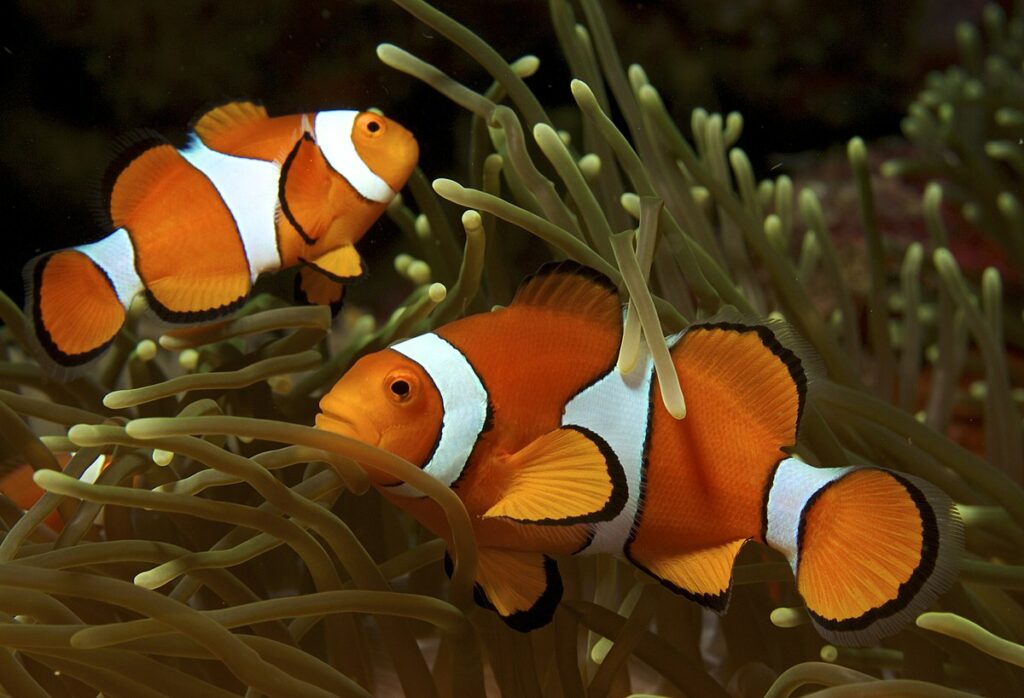Why do male clownfish change sex?

Clownfish, prominent members of coral reef ecosystems, exhibit a remarkable ability for sex change. This unique feature involves males transforming into functional females when specific conditions within their environment and social structure require it. This fascinating behavior has been a subject of extensive scientific research aimed at understanding the mechanisms and reasons behind this remarkable adaptation.
Environmental and Social Triggers:
1. Social Hierarchy and Dominance:
Research by Munday et al. (2006) and Buston & García (2007) has revealed that clownfish live in hierarchical social groups within anemones, led by a dominant breeding pair. In these social structures, the dominant female dictates breeding, while the dominant male serves as her mate. When the dominant female is removed or dies, the highest-ranking male undergoes sex change to become the new breeding female, thus maintaining the reproductive function of the group.
2. Environmental Factors and Stressors:
Clownfish sex change can also be influenced by environmental and social stressors. Studies by Ross & Hamilton (2014) and Hattori et al. (2017) suggest that changes in the population, available mates, or environmental stressors may trigger hormonal shifts, leading to sex change in males. These shifts in the social or ecological landscape may prompt the transformation from male to female as a response to the circumstances within their habitat.
Hormonal and Biological Mechanisms:
1. Gonadal Transformation:
The sex change process in clownfish involves significant alterations in the gonads. Casas et al. (2016) and Saka & Aida (2018) explain that the testes of male clownfish transform into functional ovaries, allowing the converted fish to produce eggs and take on the role of a breeding female. This transformation is enabled by changes in hormone levels, triggering the development of female reproductive structures.
2. Hormonal Regulation:
Studies by Godwin (2009) and Sfakianakis et al. (2020) emphasize the pivotal role of sex steroid hormones in orchestrating the sex change process in clownfish. The balance and fluctuations in sex steroids like estrogen and androgens influence the physiological and behavioral changes necessary for sex reversal. Hormonal shifts guide the morphological and behavioral transitions necessary for the sex change to occur.
Evolutionary and Reproductive Significance:
1. Group Reproductive Success:
The sex change behavior in male clownfish is crucial for the reproductive success of the social group. In the absence of the dominant female, the sex change ensures the continuity of the breeding within the group, sustaining the reproductive potential. This adaptation contributes significantly to the survival and propagation of the species.
2. Adaptive Response to Environmental Changes:
The ability of male clownfish to undergo sex change reflects an adaptive response to environmental changes or social dynamics within their habitat. This flexible reproductive strategy ensures the maintenance of reproductive capability, even in dynamically changing environments, contributing to the adaptability and survival of the species.
In conclusion, the phenomenon of male clownfish changing sex is a remarkable adaptation driven by a combination of environmental triggers, social hierarchy, and hormonal regulation. This unique behavior ensures the continued breeding success and survival of clownfish populations, offering valuable insights into the ecological and evolutionary mechanisms at play in coral reef ecosystems.
References:
- Buston, P. M., & García, M. B. (2007). An extraordinary life: the natural history of the clownfish. Marine Biology, 153(6), 1113-1124.
- Casas, L., et al. (2016). Sex change in clownfish: molecular insights from transcriptome analysis. Scientific Reports, 6, 35461.
- Godwin, J. (2009). Social determination of sex in reef fishes. Seminars in Cell & Developmental Biology, 20(3), 264-270.
- Hattori, A., et al. (2017). Influences of sex change on sex allocation in a socially controlled protandrous hermaphroditic anemonefish. Journal of Fish Biology, 90(3), 1065-1075.
- Munday, P. L., et al. (2006). Contrasting patterns of reproductive biology in two anemonefishes (Pomacentridae: Amphiprion), with a focus on the unusual relationship between these fishes and their hosts. Marine Biology, 149(2), 223-233.
- Ross, R. M., & Hamilton, A. E. (2014). Influence of social structure on sex change in the clown anemonefish. Marine Ecology Progress Series, 496, 171-182.
- Saka, Y., & Aida, K. (2018). Role of steroidogenic factor 1 in the process of sex change in the protandrous anemonefish Amphiprion clarkii. Scientific Reports, 8, 4509.
- Sfakianakis, D. G., et al. (2020). Fish steroidogenesis, steroidogenic factor 1, and aryl hydrocarbon receptors: insights for endocrine disruption in aquatic environments. Environmental Science and Pollution Research, 27(18), 22326-22334.










